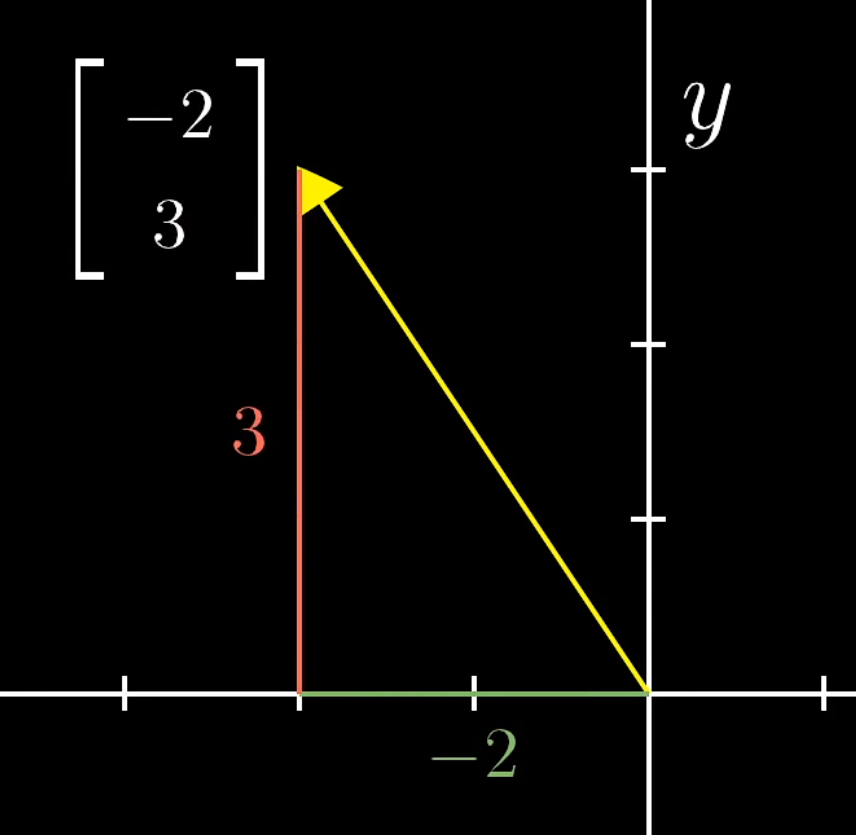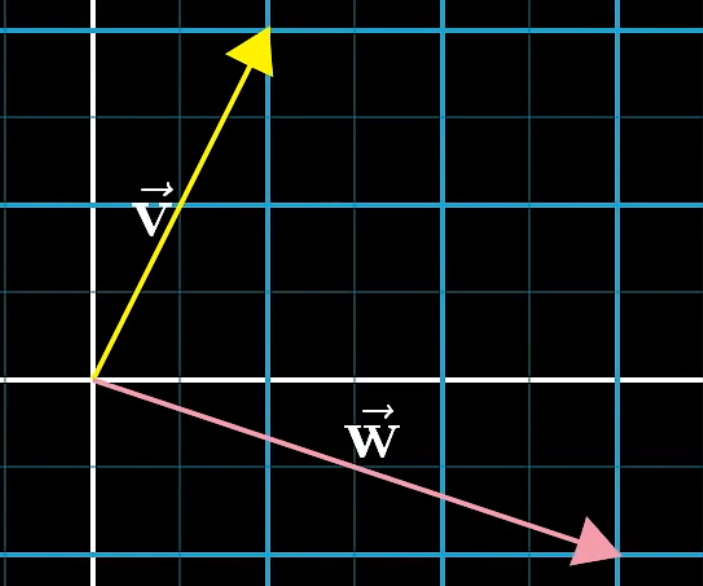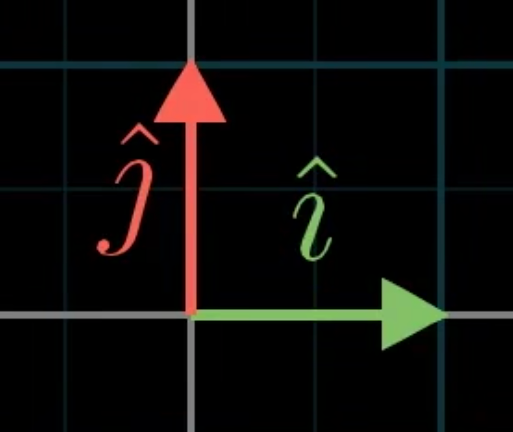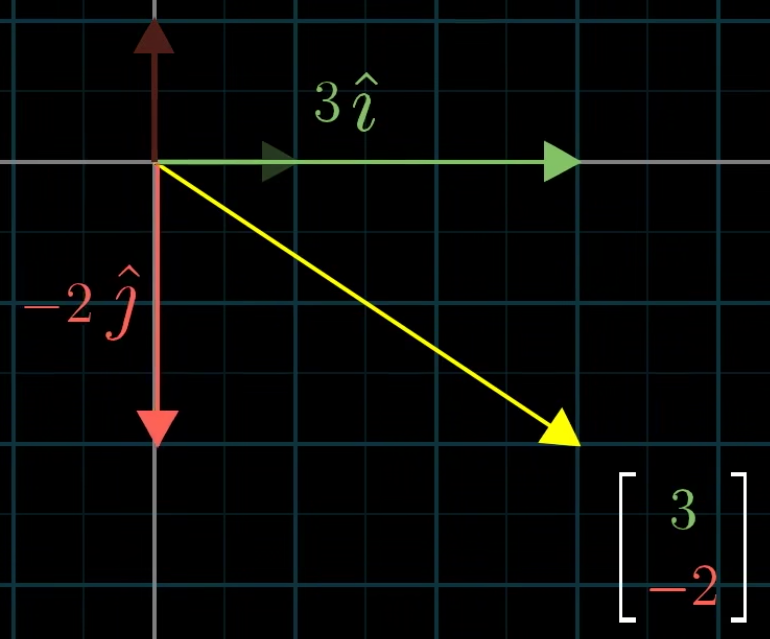《线性代数的本质 (Essense of Linear Algebra) 》系列视频 (作者:@3Blue1Brown):3Blue1Brown的个人空间_哔哩哔哩_Bilibili
00 序言
"There is hardly any theory which is more elementary than linear algebra, in spite of the fact that generations of professors and textbook writers have obscured its simplicity by preposterous calculations with matrices."
“其实很少有理论像线性代数那样简单明了,(学生学不好)只是因为人们总是强调矩阵计算,从而将其复杂化了”
因此,为了更深入地理解线性代数,我们应该少关注数值计算,多关注几何直观
01 向量
向量是线性代数中最基本 (root-of-it-all) 的组成部分
定义
向量是一个数字列表,每个数字为它的分量,如。
向量可以代表任何东西,只要它保证以下两件事情有意义即可:
- 两个向量相加,如
- 数字与向量相乘,如
、
几何表示
可以这样画图表示向量:在坐标轴中使用箭头,且箭头起点必须位于原点。
向量中的数字表示如何从向量原点出发到达向量终点。
以二维向量为例:
第一个数-2表示从原点出发沿X轴方向走多远,第二个数3表示接着沿平行Y轴方向走多远。


两向量相加
对于两个向量和
,我们平移第二个向量
,使它的起点与第一个向量
的终点重合,
然后从的起点出发指向
的终点画出一个新向量,这个新向量就是它们相加的和


计算上,我们有
思考:为什么向量相加要这样定义呢?
可以把每个向量看作一种特定的运动——在空间中朝着向量指向的方向移动一定的距离
如果你先沿着第一个向量运动,然后再按照第二个向量所描述的运动方式运动,那么总体效果与你沿着这两个向量的和运动无异
数字与向量相乘
给一个向量乘以一个数m,
意味着把这个向量拉长(或缩短)为原来的m倍
注:此处如果m为负数,则表示先把反向,再进行拉长(或缩短)

我们把这个变化过程称之为缩放 (scaling)
这里的倍数m称为标量 (scalar)
计算上,向量与数字相乘的结果就是将向量中的每个分量与该数字相乘,即
小结
线性代数始终围绕着这两种基本运算:向量加法与向量数乘(记住这句话)

在这里插入另一个视频,形象地讲解了点乘(内积/数量积)与叉乘(向量积)的区别
02 基、线性组合、张成的空间、线性相关/无关
向量是一个数字列表,每个数字为它的分量
在线性代数中有一件事情非常重要:我们需要用一种特殊的方式去看待向量——把向量中的每一个分量看作是一个标量 (scalar)
以二维向量空间为例,有两个特殊的向量:

- 一个指向正右方,长度为 1 ,称为
或 x 方向的单位向量
- 一个指向正上方,长度为 1 ,称为
或 y 方向的单位向量
它们也称为向量空间的基向量(简称基)
对于向量 ,分量 3 和 -2 就是被看作是标量
不妨这样想:这两个标量分别代表其与对应顺序的基向量相乘的结果,即 和
其中,我们知道:
是对基
拉长 3 倍后得到的向量
是对基
拉长 -2 倍后得到的向量
向量 正好是向量
与
相加的结果,即

也就是说,在一个向量空间内,所有的向量都可以看作是基向量缩放后相加的结果(记住这句话)
// todo...
向量空间的一组基是张成该空间的一个线性无关向量集








 https://www.bilibili.com/video/BV1Ys411k7yQ
https://www.bilibili.com/video/BV1Ys411k7yQ













 2305
2305











 被折叠的 条评论
为什么被折叠?
被折叠的 条评论
为什么被折叠?








